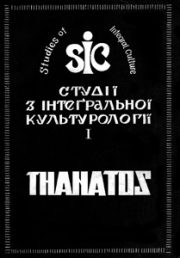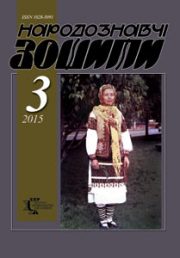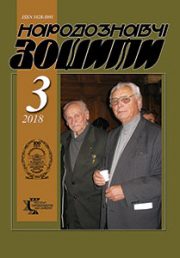The Ethnology Notebooks. 2024. № 3 (177), 651—662
UDK 730.01.071.1(477)М.Дзидра”1940/1960”
DOI https://doi.org/10.15407/nz2024.03.651
KYKTA Roman
- ORCID ID: https://orcid.org/0009-0003-1166-5462
- Teacher of Sculpture Department of
- Ivan Trush Lviv State College of Decorative and Applied Arts,
- Contacts: e-mail: sculptorromankykta@gmail.com
Abstract. The figurative and plastic features of M. Dzyndra’s sculptural works from the early period of creativity from the second half of the 1940s to the early 1960s are characterized, and their significance in the evolution of the master’s creative method is elucidated. The periodization of the sculptor’s early creative explorations has been specified. It is established that within this framework, two stages can be distinguished: the second half of the 1940s and the 1950s to the early 1960s. It is demonstrated that, thematically, the sculptor’s work in the first stage differentiates into pieces on subjects of ancient mythology and biblical history; compositions on sacred themes; visualizations of psychological states; and interpretations of heroic national history. It is argued that the features of M. Dzyndra’s early works from the second half of the 1940s, which developed in his mature work, include generalization aimed at visualizing the essential, artistic significance of the silhouette, expressiveness, plastic contrasts, architectonics built on the juxtaposition of verticals, horizontals, and diagonals, emphasis on the «surrounding space», and the active interaction of sculptural forms with it.
It is determined that the further creative evolution of M. Dzyndra was inspired by the global modernist experience accessible in the USA and the multivariate artistic strategies of the Ukrainian emigrant environment. Based on the art historical analysis of his sculptural works, it is affirmed that the artistic strategies of the sculptor in the 1950s to the early 1960s were characterized by a gradual abandonment of mimetic principles, a search for his own artistic language, a variety of plastic solutions, a certain loss of figurative and plastic integrity, work on the border between figuration and abstraction, and an appeal to Cubist form‑making.
The methodological basis of the research is formed by the principles of systemic-synergetic and hermeneutic approaches, the application of comparative-historical, historical-biographical, and stylistic art historical methods of analysis.
Keywords: early creativity of Mykhailo Dzyndra, academic mimetic artistic principles, expression, generalization, plastic contrasts, surrounding space, abstraction, Cubist form‑making.
Received 24.05.2024
REFERENCES
- Solovii, Yu. (1978). Be Acquainted: Mykhailo Dzyndra. About Things Greater than Stars (Pp. 29—33). Suchasnist; Munich [in Ukrainian].
- Boichuk, B. (1973). Forest of Sculptures of Mykhailo Dzyndra. Svoboda, 192, 4 [in Ukrainian].
- Fedyshyn, I. (1972). Skulptor Mykhailo Dzyndra. Suchasnist, 1 (133), 113—114 [in Ukrainian].
- Hordynskyi, S., & Berezovska, Kh. (2015). Art of the Ukrainian Diaspora. Sviatoslav Hordynskyi on art (Pp. 376—380). Lviv: APRIORI[in Ukrainian].
- Pevnyi, B. (2005). Between Integration and Segregation: Masters of Our Art (Pp. 381—394). New York: Ukrainian Free Academy of Sciences in USA; Suchasnist [in Ukrainian].
- Keivan, I. (1996). Ukrainian Artists Outside Motherland (P. 226). Edmonton; Montreal: Clio Editions [in Ukrainian].
- Shymchuk, Ye. (1995). The Sculpture of Mykhailo Dzyndra: catalog of works exhibited at the Lviv Art Gallery (April — May 1995) (P. 16).Florida; Lviv: Shliakh Peremohy [in Ukrainian].
- Mysiuha, B. (2001). Sculpture of Mykhailo Dzyndra: catalog-monography (P. 343). Lviv: Lileia-NV [in Ukrainian].
- Kosmolinska, N. (2005). The Museum is a Gift to Lviv. Halytska brama, 124—126, 30—31 [in Ukrainian].
- Voloshchak, Yu. (2013). The Dzyndra Brothers Come from Demnia village. Halytska Brama (Part 10—12, pp. 19—23). Lviv: Tsentr Yevropy [in Ukrainian].
- Krupiak, Yu.I. (2013). Mykhailo Dzyndra: an unknown name in modern Ukrainian sculpture. Visnyk Kyiv National University of Culture and Arts. Chapter: Art History (Issue 28, pp. 88—93) [in Ukrainian].
- Dzyndra, S. (2023). Architectonics in the Work of Mykhailo Dzyndra. Obrazotvorche mystetstvo, 1—2, 48—49 [in Ukrainian].
- Dzyndra, S. (2010). Let’s Be Acquainted — Mykhailo Dzyndra: Sculpture, Graphics. Dedicated to the 90th anniversary of birth (P. 76) [in Ukrainian].
- Dzyndra, S. (2021). Long Way Home (P. 84). Lviv: Prostir-M [in Ukrainian].
- Skrypnyk, H., & Kara-Vasylieva, T. (2 eds.). (2007). History of Ukrainian art: in 5 vols. Art of 20th century (Vol. 5, p. 1048).). National Academy of Sciences of Ukraine; M.T. Rylskyi Institute of art studies, folkloristics and ethnology [in Ukrainian].
- Novozhenets, H. (2015). Visual Art of the Ukrainian Diaspora of the 1940s —1970s: the diversity of artistic experience (P. 280). Lviv: Kalvariia [in Ukrainian].
- Holubets, O. (2020). The Magic of the Third Dimension. Sculptural Plasticity from the late 19th to the early 21st century (P. 143). Lviv: Kolir PRO [in Ukrainian].
- (1947). Catalogue of the Art Exhibition in the City of Regensburg and the Regensburg District of the Year 1947 (P. 51). Regensburg [in Ukrainian].
- Cassirer, E. (2020). The Philosophy of Symbolic Forms. Language (Vol. 1, p. 398). London: Taylor & Francis.
- Solovii, Yu. (1978). Pop Art — The Newest Art? About Things Greater than Stars (Pp. 189—204). Suchasnist; Munich [in Ukrainian].






